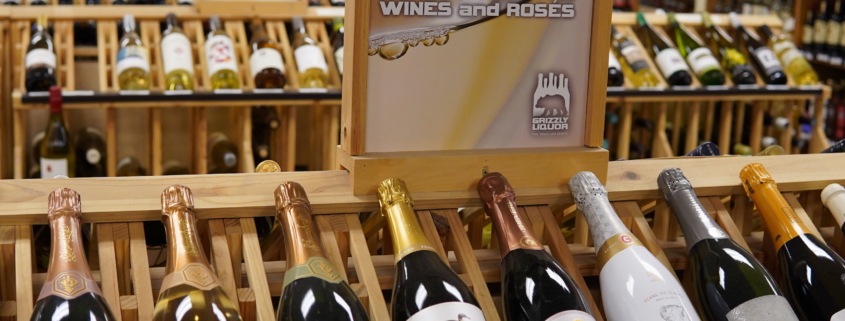Rosé. Unless you’ve been hiding off the grid (which wouldn’t entirely be surprising in Montana), we are sure you’ve heard of this drink that has exploded in popularity. With sales of rosé spiking in the summer months, we figured now was the best time to provide a little education on this drink of choice.
I’m Confused: There Are No Pink Grapes.
It’s the skin of the grape that actually makes a difference here. When all grapes are juiced, no matter what color skin they have, the resulting liquid is clear. As the skin of the grapes comes in contact with the juice, the wine obtains a yellow or red color over time. Here’s a word that’ll impress all your friends at the next dinner party: maceration. That’s the name of the process for the grape’s skin color bleeding into the juice and giving it its color.
Okay, so, maceration. It’s a great word, but the rosé’s pink color is still a mystery. In this case, think of pink being red…lite. When making a rosé, the winemakers allow the juice from the grapes to soak with the skins anywhere from a few hours to for a couple days before separating the two (red wines are generally allowed to macerate for longer). The variety in the resulting shades of pink correspond to the varying maceration methods. After the juice ferments, voilà, you have a finished rosé!
But What is Rosé?
Rosé is not derived from a specific type of grape; it’s a genre of wine, like reds and whites. Rosés can be made from any red grape in any region of the world. While a few brands are made from one type of grape (single varietal), most are a blend.
Let’s get a common misconception out of the way: not all rosés are sweet. In fact, they can be quite dry as well. Old World (think Europe) rosés are typically on the drier end of the spectrum, while rosés produced in the New World are usually sweeter and fruitier. Without getting too granular, the climate of the region and methods used in production also contribute to the differences in taste.
The typical flavor profile of a rosé is fresh and fruity. The body of the wine will dictate which foods with which it will pair best. From light, dry rosés to sweet, sparkling rosés, it is possible to find a variety of this pink drink that will accompany the vast majority of food, including spicy options, fish, salads, red meats, and rich sauces.
Where is it Made?
Ah, oui oui! Let’s head to the Provence region of France. This region of southeast France creates rosé more than any other place. Although its popularity in the United States has come about relatively recently, it has been part of the French gastronomy for quite some time. Spaniards and Italians are also making and drinking it as well.
Although the French have proven themselves as leaders in the space, rosé production is happening in California, Australia, Argentina, and beyond.
A Few Extra Details
Serve your rosé like you know what you’re doing! Some wine experts recommend serving rosé in smaller glass to keep it cooler for longer. If you’re really planning on going all-in on your new love of rosé, there is even rosé-specific glassware. Decanting (exposing the wine to oxygen to bring out its flavors) isn’t typically necessary for rosé.
Find Your Rosé at Grizzly Liquor
At Grizzly Liquor, we have rosé options at every price point! This includes fan favorites Rosé of Pinot Noir from Yamhill Valley, Rosé Willamette Valley from A to Z Wineworks, and Pleasure Party Oh Baby Pink Moscato Rosé from Château Diana. No matter how you decide to drink it, we know you’ll be able to find a rosé that will elevate your Montana summer.




